"An Exercise in Self-Indulgence" - "Beauty & The Bass" - "Geddy Lee's Big Beautiful Book Of Bass Review"
The story behind Hemispheres, and Geddy Lee schools us on bass guitars...
By Dom Lawson, PROG, December 2018, transcribed by John Patuto
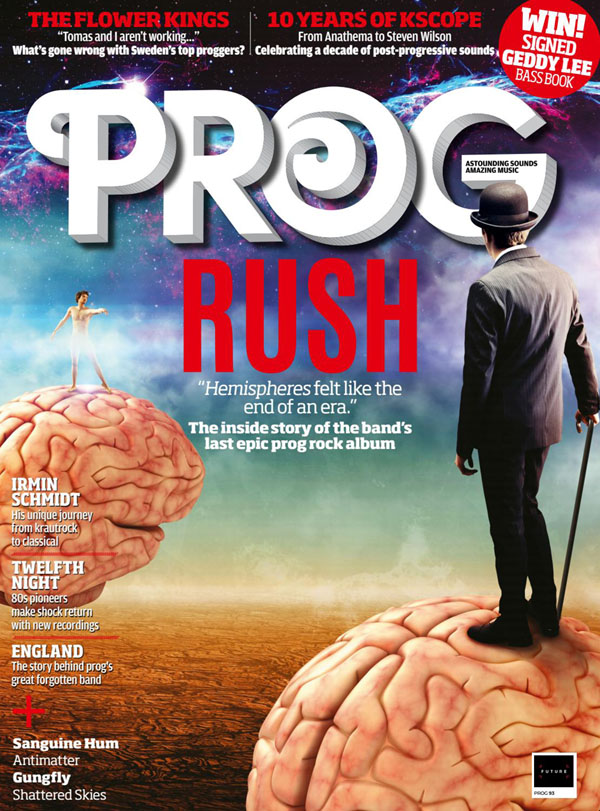
Editor's Letter
Where does Rush's Hemispheres sit in their impressive canon of work for you? I know for a fact that it is both Steven Wilson and Les Claypool's favourite Rush album. And if I remember correctly, Prog readers rated it just behind the twin behemoths of 2112 and Moving Pictures as the band's greatest work.
Whatever your thoughts, it stands as a bastion of creativity at a time when musical values were being questioned and re-evaluated. Upon its release in October 1978, punk had already burnt itself out, the strains of new wave were starting to sound distinctly old wave and the NWOBHM was about to blow in, carrying Rush as one of its prominent bands.
Hemispheres itself, as Geddy Lee himself says, felt like the end of an era. It represents the band at their most flamboyantly creative (Cygnus X-1 Book II: Hemispheres and La Villa Strangiato) and their most rockingly forthright (Circumstances and The Trees). Acknowledging their past and looking towards their future. As ever, restlessly progressive.
That's why it's a delight to celebrate the album's 40th anniversary this issue. To look back and admire how these albums of our youth have held up over the years. And in this case, I'd say remarkably well.
Jerry Ewing- Editor
An Exercise in Self-Indulgence

This year marks the 40th anniversary of Rush's Hemispheres, well-known as one of their most challenging records to make, but its stunning 36 minutes remain a clear indication of the band's incredible chemistry. Geddy Lee remembers its creation, and ponders its legacy...
"When you've been a band for as long as we've been around, almost every day at this time of year, it's an anniversary of something..."
Poor old Geddy Lee. Just as the legendary bassist thought he was at least temporarily relieved of the task of talking about Rush, another gargantuan anniversary loomed over the horizon. Forty years have passed since the release of Hemispheres: not just one of Rush's most widely beloved records, but arguably the one that most thrillingly encapsulates the progressive abandon of the Canadians' first decade together. Recently reissued in ultra-lavish, multi-format form, Hemispheres certainly deserves a louder commemorative cheer than most, even though Lee remains skeptical about the need to mark every possible milestone.
"We always tried to release our records before Christmas or just after Christmas, if we could, so this time of year is flooded with memories of release dates for me," he notes. "It's a bit crazy at times. I saw somebody posted a celebration of the 33rd anniversary of Mystic Rhythms [from 1985's Power Windows] today, on some Internet site. Well, thank you very much! [Laughs] This guy was doing a rendition of Mystic Rhythms, which was actually quite beautiful and it was nice to hear it played on just acoustic guitar and voice. He did a great job, but do you celebrate the 33rd anniversary of anything? It's a bit mental."
When it comes to Hemispheres, Lee is more than happy to regale Prog with the inside story. One of the most vociferously debated and lauded albums in Rush's vast catalogue, these 36 minutes of explosive, pioneering prog are notorious for having pushed the three musicians to the limit of their abilities. In fact, Hemispheres is often cited as the album that nearly broke Rush for good. In truth, as Lee explains, as they arrived in the spring of 1978 after finishing a gruelling world tour in support of the hugely successful A Farewell To Kings, Rush were too full of ideas to contemplate taking a rest.
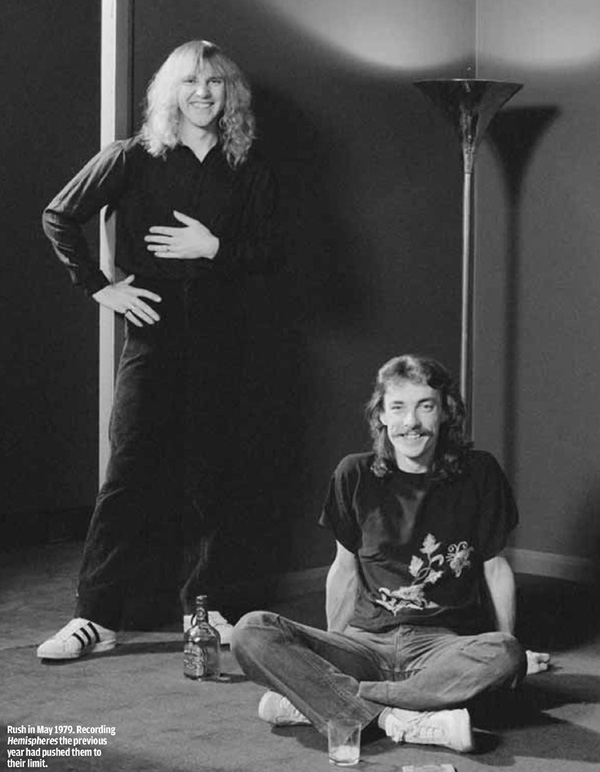
"I think we were tired after the touring but at the same time we were also feeling pretty good," he says. "Our range was expanding and we were feeling pretty ambitious at that time, which is evidenced in the crazy record that we made in Wales! We'd had a good experience working at Rockfield Studios before and that left a good taste about the whole idea of recording in Britain again. When we arrived in Wales we were psyched, we were excited, but at the same time we were not super well prepared. Although we had a lot of ideas, we hadn't really hammered them out, so we found ourselves in a new situation, in a house not far from Rockfield. We'd planned to be there for a short time and it turned into a much longer time, as everything to do with that album did. I'd say we were excited and a little bit nervous about the lack of preparation, but we were ready to dig in."
Hemispheres' reputation as a difficult album to make is arguably well-founded. With nothing concrete to lay down on tape, Lee, guitarist Alex Lifeson and drummer Neil Peart were under considerable pressure to conjure an album's worth of material within a few short weeks. It is perhaps indicative of exactly how potent the chemistry was between the trio at this time, that being woefully underprepared seems to have pushed them to unexpected new heights. Not surprisingly, the bulk of the songwriting sessions were spent working on Hemispheres' grandiloquent opener, Cygnus X-1 Book II: Hemispheres, the sequel to A Farewell To Kings' grand, conceptual closer, Cygnus X-1 Book I: The Voyage.
"Once the lyrics started coming together and we saw that Neil had this strong conceptual piece in his head, that sort of helped us to form a plan of action and so I think it was quite an exciting way to work," states Lee. "In the past, we'd usually save one song on any album to write while we were in the studio, just off-the-cuff. Usually those songs would point us in a different direction for the next record, songs like The Twilight Zone [from 2112, 1976], Vital Signs [from Moving Pictures, 1981] and New World Man [from Signals, 1982] for example. But this was a lot more than just 'Let's write a short, five-minute tune.'
"We'd get together in this room in the house where our gear was set up and we'd just wrestle with the lyrics and put together melodies," he continues. "We'd do all of that sitting around with each other, not necessarily plugged in, with Alex on an acoustic guitar, perhaps, and me on my bass, or sometimes we'd both write on acoustics. Then, with Neil, we'd hammer out a loose structure and then we'd take it to the next step, get behind the machinery and start playing it out until we were able to form the song. It was very much a three-way street in terms of coming up with the final version of the song."
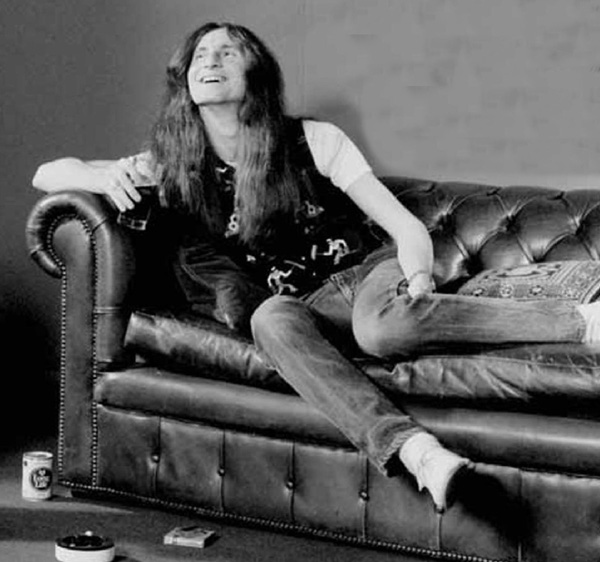
One familiar apocryphal tale about the making of Hemispheres posits that Neil Peart was struggling with the job of writing lyrics and felt under immense pressure to deliver something special. Not so, according to Lee, who notes that continuing the Cygnus saga was fundamental to defining the new music's direction.
"I think [writing a sequel] made it easier for him, to be honest. I think he'd been thinking about this for a while and I think he knew where he wanted to go. It was just a matter of fleshing it out. He was probably more prepared lyrically than we were musically. Alex and I were really playing catch-up."
Hemispheres is best known for its two magnificent bookends: the sprawling, joyously intricate title track and the instrumental, showboating blitzkrieg of La Villa Strangiato. But at a time when Rush were significant figures in the rock world and increasingly in demand on US rock radio, Hemispheres also managed to conjure two of the band's most succinct and enduring songs. The sub-four-minute splendour of Circumstances, in particular, hinted strongly at another possible direction for these young masters to pursue, while giving them a much-needed break from the arduous longform songwriting process.
"Yeah, that song was a bit of a holiday for us at that time, like, 'Let's do something short...!'" Lee laughs. "The truth is, we don't write more than we can use. If, along the way, a song doesn't cut it, we just kick it out. We famously have no hidden tracks because every song took maximum effort and we didn't see the point in putting in maximum effort for a song we had doubts about. So we decided that we needed one more song for Hemispheres, Neil had these Circumstances lyrics, and it became a great opportunity to do something different. Working on a side-long piece is so draining on many levels, you feel like you're a slave to this concept, so anything that's not like that feels way more fun!"
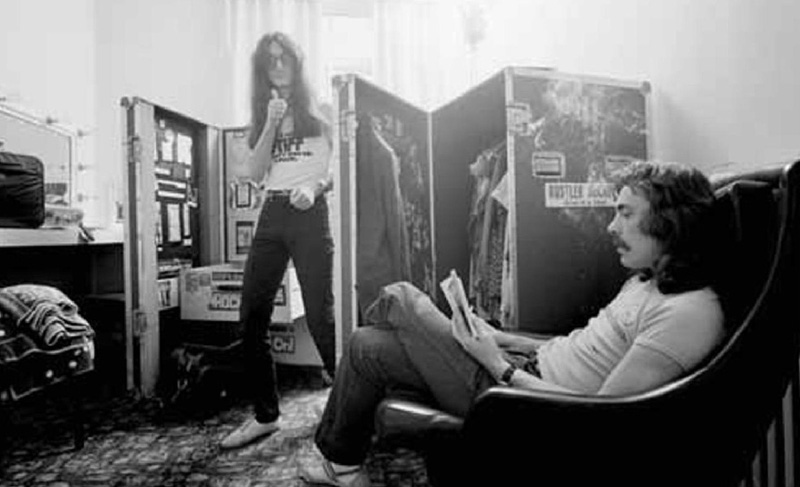
Strangely, the song that became one of Rush's biggest ever hits, both on the radio and within their enormous fan base, was Hemispheres' skewed, side-two curio The Trees. A deceptively spiky tale, this disquieting fantasy about oaks and maples competing for the sunlight is an unlikely anthem, particularly given its rather unpleasant denouement. (Spoiler alert: the oaks get chopped down to size.)
"That song was one of the most fun that we were working on at that time, for sure," Lee says. "We were surrounded by all that nature at Rockfield and it just made sense. I remember mixing it at Trident Studios, and the engineer was a lovely guy. He was new to our music and I remember him, after one run-through of the mix, saying, 'This is a nasty little tune, isn't it?' I said, 'Well, maybe a little...' But yeah, it was great fun to do that song. I loved the textures and the changes. It just turned into one of our classic songs, I think. Surprisingly, I still hear it a lot travelling around America. I remember reading, when it first came out, that it was a big radio song on some big FM station in Texas, and I thought, 'Wow, that's weird...' It is kind of odd, but it's sort of become one of our iconic songs."
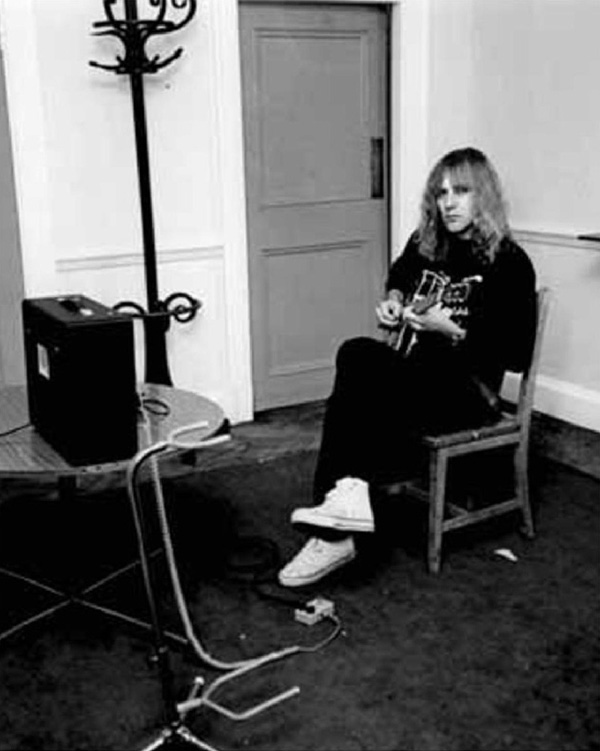
There remains something wonderfully subversive about the thought of hearing The Trees nestling alongside More Than A Feeling and The Joker on US rock radio rotation, but Lee attributes the song's enduring success to Neil Peart's unerring ability to leave room for manoeuvre in Rush's lyrical world.
"Well, one thing that was always important to me, as a songwriter and regardless of what Neil was talking about, was I always felt the audience needed to have a choice," Lee avows. "You need to have the option of what you get out of the song, whether it's just a musical thing or if it's the sound of the lyrics or whatever, that's fine. You don't have to understand it the way I understand it. And I don't always understand it the way Neil understood it. I'm the first interpreter in that chain and the audience are the next set of interpreters. That's the beauty of art, it's what makes it so alive. It should be communal and international in a way. It should be open to interpretation."
Is that another one of the benefits of playing progressive rock? It's a genre that deals in so many ideas and concepts that the unexpected is almost expected...
"That's true. You can't really write a rootsy country song about an egg-sucking dog [he's referring to Johnny Cash's Dirty Old Egg Sucking Dog] and keep any kind of mystery about what it's about! I hate having things so explained to me sometimes. I was a huge Yes fan, and still am. Did I know what the fuck Jon Anderson was talking about most of the time? No! Does anyone? Does Jon? [Laughs] He had an idea and only really he knows what he was trying to get across. I have my own takeaway from those songs and I think it's important to have that in music."
Take a quick straw poll of any random gaggle of Rush fans and it seems safe to say that La Villa Strangiato would come out on top of any list of favourite songs from Hemispheres (although, it has to be said, there are only four songs on it in the first place). Perhaps the ultimate showcase for the mind-bending musical chemistry between Lee, Lifeson and Peart, it has weathered 40 years impeccably and still sounds like what it truly is: the sound of three young, preternaturally gifted musicians showing off and being insanely, joyfully inventive in the process. Thinking back to Rockfield, Lee notes that the sense of utmost urgency we hear on Hemispheres' closing track is the result of a lot of blood, sweat, tears and insanity.
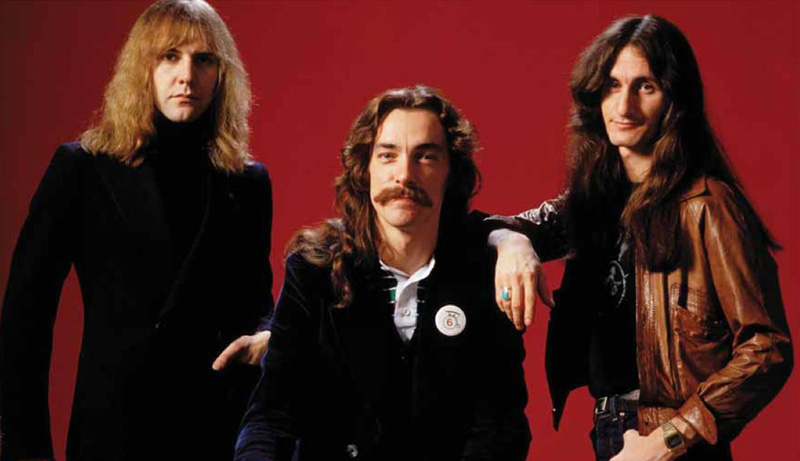
"I don't really remember how the writing came together but I do remember rehearsing the hell out of it beforehand. We really wanted to record it all in one go. It's about 10 minutes long and we wanted to do it in one shot. I remember writing it was great fun because the whole inspiration was, of course, these crazy dreams that Alex used to foist upon us every morning at breakfast. He'd start, 'You'll never guess what I dreamed last night...' and the groaning would begin! But it was a really fun, visual and musical exercise, constructing a soundtrack to an insane person's dreams! [Laughs]"
More than any other Rush song, La Villa Strangiato captures the wild energy that drove the band in their early days. You can almost hear them grinning as they switch moods and tempos on the head of a pin.
"Doing something like that gave us licence to change as often as we wanted, to make the music as complicated as we wanted, to stylistically shift gears every 30 seconds. All of that is free and open to you. That's the beauty of doing that kind of instrumental. You can make it up as you go along, you can decide what the script should be and it doesn't have to bear any relation to anybody's idea of what an instrumental song should be. So it was super fun to do and it's still super fun to play live. It's one of my favourite songs to play."
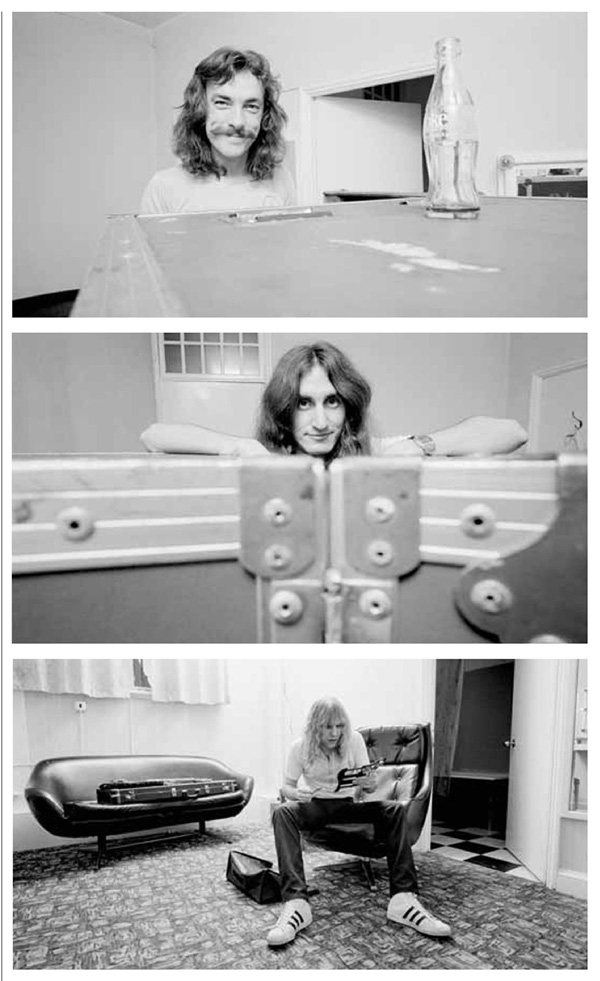
Legend has it that they recorded more than 40 takes of La Villa Strangiato before nailing the final version. Is that close to the truth?
"I don't remember how many takes it took but I do know that we never got it in one go!" Lee chuckles. "We'd set out to get it in one 10-minute go, but again, our ideas were more solid than our ability to play them! So we settled for doing it in four pieces. We divided it into four, focused on those and then used the good old magic of editing tape to stick them together into one cohesive piece. Those were the days before click tracks and that digital, metronomic attitude towards putting music together. So it was very much down to how you felt in the moment. Sometimes you'd get excited and you'd speed up, and sometimes that's the way it should be. That's why it feels so live."
Originally planned as a four-week excursion to Rockfield, the Hemispheres sessions steadily turned into a much lengthier mission for all concerned. Due to both the complex nature of the music and the efforts required to perform it properly and to various technical problems that slowed the recording process, Rush and co-producer Terry Brown found themselves running out of time, working around the clock to somehow piece this preposterous magnum opus together.
"At this time we'd developed this crazy foot pedal system, kind of a version of MIDI before that existed, and it arrived in time for the writing sessions in Wales but it didn't work," Lee recalls. "We were so upset about that and we spent way too many hours trying to make it work. We got some semblance of it working, certainly enough to be able to record. We really had a lot of fun working there, but the hours were getting later and later. We were sleeping until four in the afternoon and having breakfast at supper time, and then before you know it we were up until six in the morning again, going to sleep as the birds were tweeting and the sheep were baa-ing, you know? It was a crazy schedule and we ran out of time there. They had other people coming in, so we had to high-tail it, so we didn't use the time we had set aside for mixing at Advision [Studio]. We used that to record vocals."
Famously, Neil Peart introduced a gong into his percussive arsenal on Hemispheres. Meanwhile, Lee was experimenting with new effects pedals. Added to the intricacy of the songs themselves, is it any wonder that Rush struggled to get everything done in time?
"I think basically what we wanted was to record everything live on the floor. We wanted to record the songs in long pieces. Cygnus Book II was an adventurous piece of music to play and it was much more difficult than we expected, so in a way our skill set wasn't as polished as our ideas were. What's the expression, 'Our reach exceeded our grasp?' So it was difficult. We had to raise our game and that's really what that album was all about, raising our game."
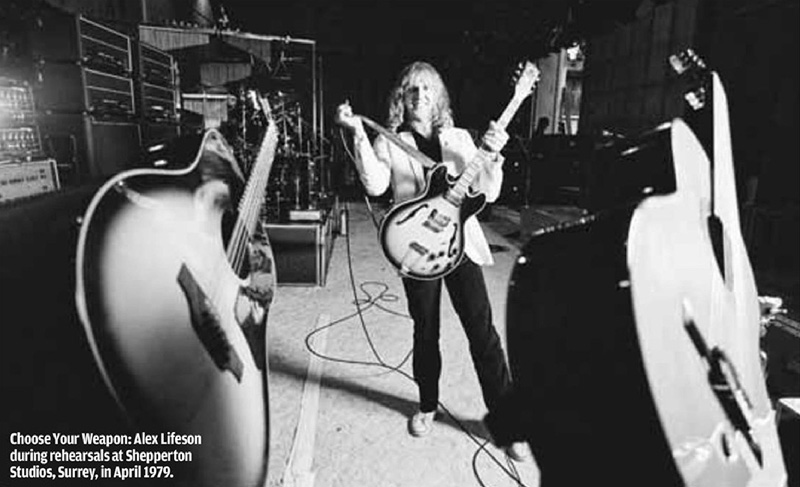
Another well-worn snippet of Rush mythology concludes that the band struggled during the Hemispheres sessions because they were deeply unhappy about the state of their living conditions at Rockfield. Again, Lee dismisses the idea, noting that they had been there before - to record A Farewell To Kings - and were more than aware of what to expect.
"Oh, it was fine. I mean, you need something to complain about, right? Otherwise you start picking on each other. But I think we were okay there. We were happy there. I mean, we were there for far too long and after doing two projects in a row, we didn't really want to go back there again! I think we set a record for the number of grey-skied days we spent in Wales, but at that time of year, it's fairly typical for Great Britain, right? At any time of year, in fact... But we really liked the people at Rockfield, they took great care of us. We have very fond memories of Kingsley [Ward], who ran the place, and Otto [Garms], their in-house tech who was desperately trying to help me to fix my technical issues."
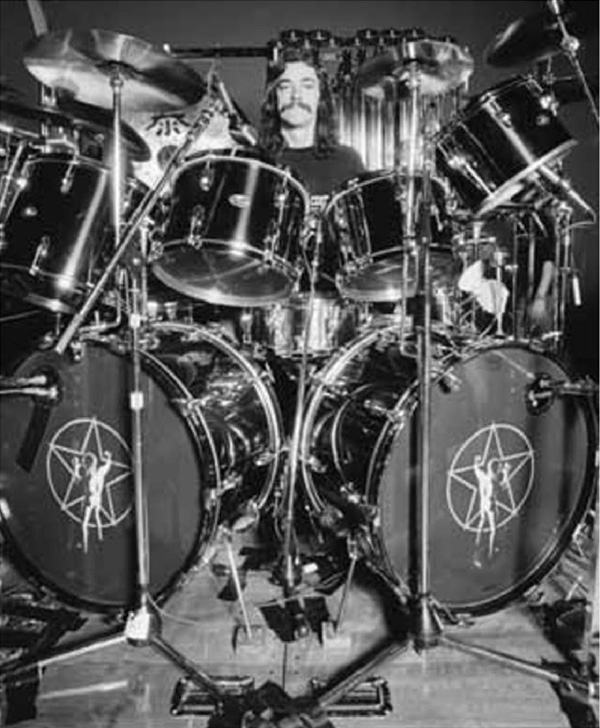
With the four new songs committed to tape, Rush abandoned their Rockfield hideaway and headed for Advision Studios in London to add Lee's final vocals. By this point, the band were perilously over-schedule and while they still felt hugely positive about the music they were making, the atmosphere in the studio was undeniably tense: not the ideal environment for hitting some of the highest notes that the frontman has ever attempted.
"It was getting later and later and people were getting a bit gnarly about the record and when it would be finished," says Lee. "I was certainly a bit gnarly when I was doing the vocals. The difficult thing was that as we'd sketched these songs out, sitting around in a casual manner and humming the melodies - I hadn't really sung them out against recorded, heavy tracks. When I came to record the vocals, of course, it was all in a very difficult key and it really pushed my range. That made me a very unhappy puppy! Unfortunately, I gave our producer Terry Brown a very rough time while I was recording, because I was so frustrated. I was in that vocal booth at Advision trying to hit those notes over and over again, trying to make them as perfect as I could, and it was tough. It was really up there!"
Forty years on, those absurdly high notes have simply become a recognised part of Geddy Lee's vocal repertoire. Looking back, however, he cites those sessions as an extremely educational moment in the band's evolution as songwriters and album-makers.
"Oh, it was a major lesson learned. It was a major faux pas," he admits. "I think part of it was that I was angry at Terry, in a way, because I thought, 'This is what producers are supposed to do, isn't it?' You know? Shouldn't he have come in and said, 'Do you think that's in the right key?' but that was something that almost never happened with Terry. Whatever we wrote, he made sure we recorded. He would, of course, question arrangements and make suggestions on structure, but I don't think he ever suggested I try something in another key. It wasn't until I started working with Peter Collins [on Power Windows, 1985] that it became a matter of course and you did that with every song. He'd say, 'Let's try this song in different keys!', 'Let's see where your voice goes!' or 'Let's see what works best!' Those were things I was still learning when we made Hemispheres, so yes, lesson learned on that one!"
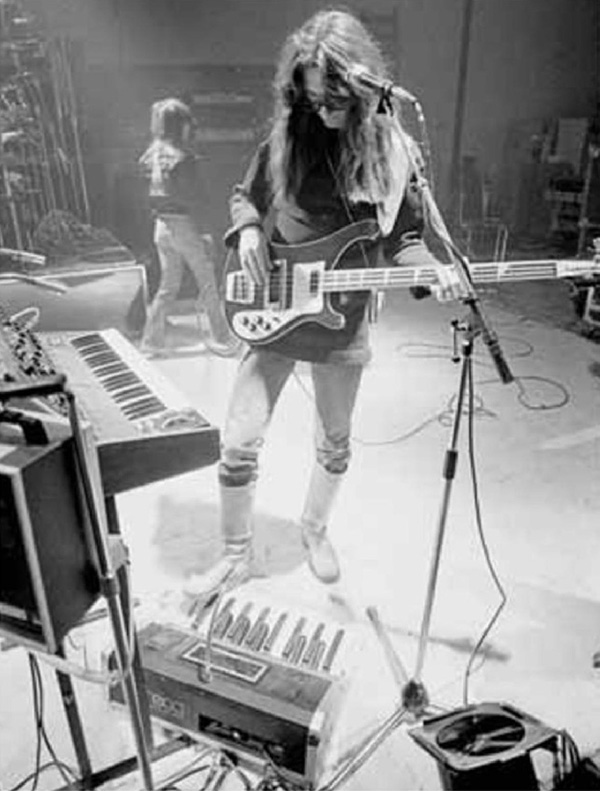
Can you still hit those notes, 40 years later?
"For short periods of time? Absolutely. When we went out on the R40 tour, we realised we were going to play some oldies, like Lakeside Park, which is another song that's way up in the stratosphere. I kept wanting to transpose the song down and Alex kept saying, 'No, you can do it!' We tried different transpositions and he was like, 'They don't sound good, Ged, come on...' So when we got into doing it at rehearsals, yeah, I could hit those notes and I managed to do it for the whole tour, so I can do it if I rehearse properly and take care of my voice. But I couldn't do it night after night."
Hemispheres was released on October 29, 1978, resplendent in its none-more-prog artwork, courtesy of regular Rush collaborator Hugh Syme. Artfully capturing the album's lyrical preoccupation with duelling sides of mind and spirit, the cover's giant floating brains added an extra layer of intrigue and eccentricity to what was already the band's most ambitious and thought-provoking record to date.
"Yes, the artwork definitely helped," Lee grins. "Hugh was very much wanting to express the ideas that came out of Neil's lyrics. He was really into that whole thing, what the songs were trying to say and how that should be expressed somehow in the artwork. Neil and Hugh went to town, they'd run it by Alex and I and we'd give them our opinion. I think both of the chaps on the cover are Hugh's pals. One was a ballet dancer and the other guy, I think, was a bank robber! I'm not sure if I've remember that correctly. But it's a weird cover. It freaked people out. The brains were not received well by all, but it's definitely very proggy."
A surprising critical success, Hemispheres did not take off in quite the way that Rush's record label bosses may have wanted, but its initial, solid performance in charts worldwide - including reaching number 14 in the UK - confirmed that the band were still heading onwards and upwards. For Lee, Lifeson and Peart, it was a case of sitting back and waiting for the fans' responses to start trickling down to them. As far as they were concerned, they had made a great, if challenging, new record, but there was no guarantee that everyone else would agree...
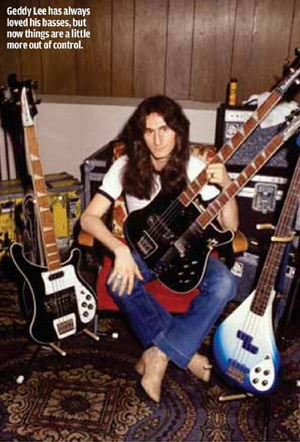
"No, I had absolutely no idea how people would take it," says Lee. "I just thought people would think it was way too weird! We had no idea. I knew it would be a tough sell to radio, because these pieces were so long. But you can't worry about that stuff when you're doing it. I saw this interview with Robert Redford the other day and he quoted TS Eliot, and Eliot said that it's all about the trying, and what happens after that is none of our business. I'd say that sums up how we felt after making Hemispheres."
Were you surprised by how well received it eventually was?
"Yes, yes I was. It wasn't initially super successful, it was a slow burn. But what surprises me to this day is that I have so many fans come up to me and say that they think it's the ultimate Rush album. That surprises me! Les Claypool is among them, that's his Rush album. So it has become iconic in a way, for our band, as a representation of our most complex period."
A mere 15 months after the release of Hemispheres, Rush would casually redefine their entire sound, ushering in a new decade with the timely sheen of Permanent Waves. But while history may remember Hemispheres as a moment of transition, wherein Rush began to fully embrace music's limitless potential, Geddy Lee remembers the album as an exhausting, if momentous, full-stop at the end of Rush's rise to prominence.
"It didn't feel like a transitional record. It felt like the end of an era for me," he concludes. "I felt that the side-long thing was getting predictable for me as a writer and I wanted to bust out of that. In a sense, it felt like saying goodbye to that period. I had ideas of where I wanted us to go. Songs like The Trees and Circumstances pointed in that direction. I wanted to tell stories but I didn't want to be weighed down by themes that had to keep repeating over a 2.5 minute period. I wanted to be able to accomplish many more musical ideas over 25 minutes, you know?"
Nonetheless, for many, Hemispheres remains the ultimate Rush album: 36 minutes of jaw-dropping, no-holds-barred prog rock, conjured from nowhere and delivered with ageless, life-affirming enthusiasm. And that's worth an exuberant anniversary in anyone's book.
"I don't know if I can ever possess the necessary objectivity to be able to see and hear what people see and hear in Hemispheres," Lee concludes. "But I like to think that it's the ambitiousness in the effort we put in. There's something truly prog about that record and I think that fans of that genre really appreciate that."
Beauty & The Bass
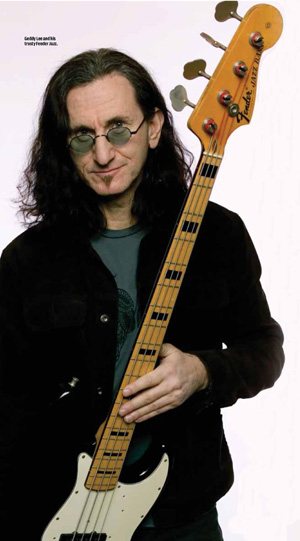
In recent years, Rush's Geddy Lee has dedicated himself to collecting bass guitars and studying the history of the instrument. He's just released a breathtaking book, Geddy Lee's Big Beautiful Book Of Bass, that delves into the world of bass in lavish detail, and includes interviews with fellow bass greats. He tells Prog more...
I have this bass, it's a '64 Dakota Red Fender Jazz bass that I bought from a fellow in Dublin. He owned it his whole life and played it in an Irish showband. When I got it, I opened the case and you could smell Guinness and cigarettes. I love that bass."
It may come as a huge surprise to many readers, but Geddy Lee has only recently turned into a massive bass guitar nerd. Despite being routinely cited as one of rock's all-time greatest bassists, the Rush frontman has largely regarded his instrument as a means to an end: a conduit for musical ideas, rather than the star of the show. All that has changed, however, and Lee has spent the last eight years immersing himself in the world of classic basses, amassing an extraordinary collection along the way. The results can be seen in all their full guitar-porn glory in the Canadian's new book, Geddy Lee's Big Beautiful Book Of Bass: a lavish, hardback coffee table-flattener, full of gorgeous photos, interviews with an eclectic selection of legendary bass players and collectors, plus plenty of anecdotal colour from the man himself.
"The first good bass I ever bought was a Fender Precision," Lee begins, by way of explanation. "It was all I could afford. The salesman in the shop told me it was workhorse and I could rely on it, and he was right. I played on that in all my Rush pre-history, all through the high school gigs and bars, at a bazillion shows. Then when I got my first record deal, I was able to buy a Rickenbacker and that was another big change for me. But I was never a collector of basses. For me, for the longest time, basses were tools. In the process of making this book, I've learned that musicians mostly look at their instruments as tools first. Then there are guys like [The Who's] John Entwistle, and they're collectors."
Primarily known for playing his trusty Fender Jazz, Geddy Lee has long since passed into bass guitar folklore as one of the instrument's greatest ever exponents. But, as he insists, the Big Beautiful Book Of Bass is not a book about bassists: it's about these rare, iconic guitars themselves, the people who played them and the obsessives, like Lee, that spend countless hours hunting them down.
"Guys like Entwistle, they couldn't keep playing the same bass and they kept switching. Bill Wyman was the same, always restless. To begin with, I was looking for the sound and the tools that could give me my sound, and that was it. But in the last eight or so years of my life, I became interested in the romantic idea of basses that my heroes played. Why didn't I ever play a Gibson bass like Jack Bruce? Why didn't I ever play a Hofner violin bass like Paul McCartney? So I thought it would fun to put together a modest collection of iconic basses, and just play them for my own satisfaction, to see how my now developed, confident fingers would feel on those instruments... and that's when my troubles began!"
As all dedicated nerds will be aware, the most innocent of hobbies can easily spiral out of control. Lee's initial plan to collect a few bass guitars for his own personal use and enjoyment would not have lent itself to a weighty 400-page tome, so it seems safe to say that a lot of cash has changed hands over the last eight years...
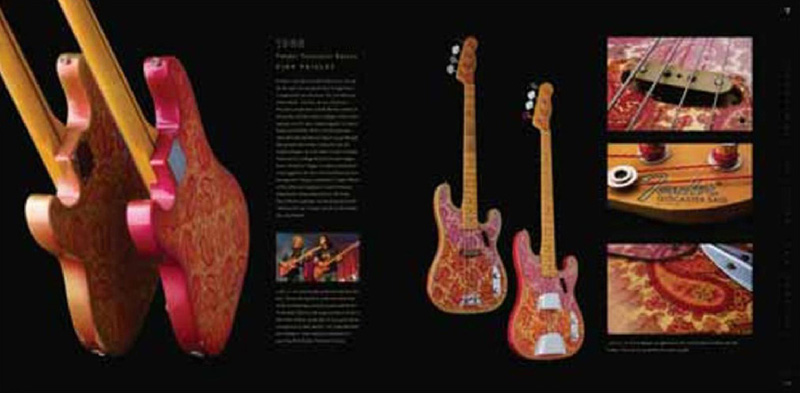
"Oh yeah, what was supposed to be 12 instruments has grown into over 250 instruments," he notes, audibly wincing. "I guess that's just how I roll! But along the way, I realised that I needed to justify this in some way, so why don't I do a book about the electric bass? If you go into book stores and look at books about the bass, they always seem a little incomplete and there's not enough artful glory in showing these instruments. They're not romantic enough for me. So being the completist kind of dude that I am, I decided to do a book where I brought these things together and showed how beautiful they are to me and try to get other people to see how beautiful they are, too."
From its not inconsiderable size and weight ("Don't drop it on your foot!" Lee advised) to its classy design, Lee's book is every inch the painstakingly conceived and executed labour of love. The original plan was to focus on the sheer visual charm of the instruments, but as the project escalated, Lee caught the author's bug and began to expand the book to include the nerd-friendly detail and debate that lies at the heart of his new obsession.
"Originally I didn't want any text in the book, so it would be like an arty thing, the beauty of the bass guitar elevated to its full glory," says Lee. "But then I felt I'd be selling people short if I didn't explain certain things. Obviously the guitar nerds and the people I chitchat with about basses, they know most of this stuff already, but by virtue of who I am, other people are going to come to this book and be interested, perhaps. So I felt I owed it to them to tell certain stories and to do it in an unobtrusive way. The pictures speak for themselves. You don't need to read the text, but it's there."
Lee's modesty is endearing but he's being daft. It's hard to imagine there will be many Rush fans, let alone bass guitar nerds, that won't want to pore over the Canadian's observations or read his interviews with four-string luminaries ranging from John Paul Jones and Les Claypool to Bill Wyman and Bob Daisley. In essence, it's a history of rock'n'roll from the bottom end up. The book also provides great insight into the musicians that influenced Lee in his formative years. Today he talks excitedly about his heroes, citing Cream's Jack Bruce, Yes' Chris Squire, The Who's John Entwistle and Jefferson Airplane's Jack Casady as his biggest inspirations. Still very much a fan, Lee brims with the irresistible enthusiasm of someone who has some really cool shit to share with you.
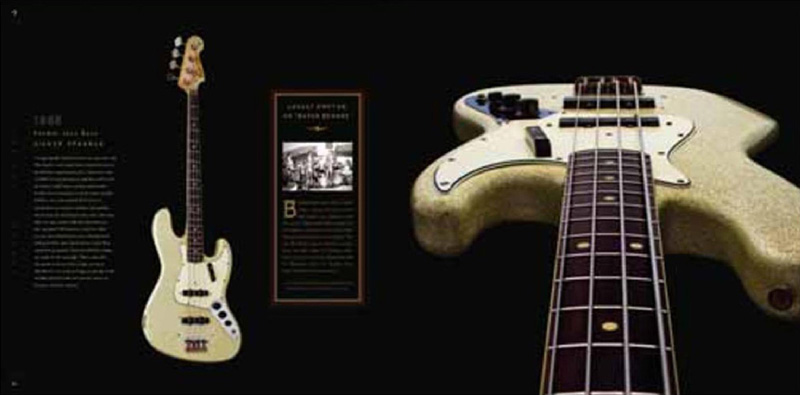
"Part of the beauty of doing the book and having this collection is that you have all the amazing stories that go along with these instruments and I think they're interesting. Other people may not I think it's nice when you get an instrument that someone has played for 40 years and he has made a life with that instrument. That's a story. So to me, these basses represent the artfulness of the middle of the 20th century. They represent the people that made a living playing them and using them. And that to me is pretty cool."
It's also clear that Lee has really enjoyed taking on the role of interviewer, after decades of being the one batting away silly questions. Chewing the bass-related fat with certified megastars like U2's Adam Clayton is a tough job, but Geddy's happy to do it.
"I could have done a book that was nothing but interviews with other bass players. It was so enjoyable. It was the biggest surprise to me, how much fun I was having talking to people in their homes and studios and so on. I tried to put together a grouping that wasn't obvious. For example, one of the nicest interviews in the book is with Jeff Tweedy from Wilco, who many people don't realise is a bass player. They have a very good bass player in Wilco, John Stirratt, but he was away at the time. Jeff's first instrument is bass and he still has his first Precision and he's a mad collector of things. But I could've easily called all the people I know and respect and just talked about bass playing. Maybe that's my next project?"
Aside from musicians' war stories, the Big Beautiful Book Of Bass is also a heartfelt tribute to those next-level nerds, the bass guitar collectors. Having not dabbled with many different makes or models over his time in Rush, Lee has clearly taken to his new hobby with something approaching rabid alacrity. He has embraced both the historical value of unearthing the guitars' stories and, for maximum nerd points, the finer details of the instruments' specifications and design.
"One of the great stories in the book is about Paul McCartney's first bass, which is legendary," says Lee. "It was his first Hofner, which is a model called a Cavern. I felt one of the jobs I had to do was to explain exactly what a Cavern is, because there are many basses referred to as a Beatle bass or a Cavern bass, but they only made that exact model that Paul played for four months in 1961, with those exact features. There are others that came out afterwards that sort of look like it, but they're not a Cavern. A true Cavern has to have certain specifications. So that was one of the hardest basses for me to find."
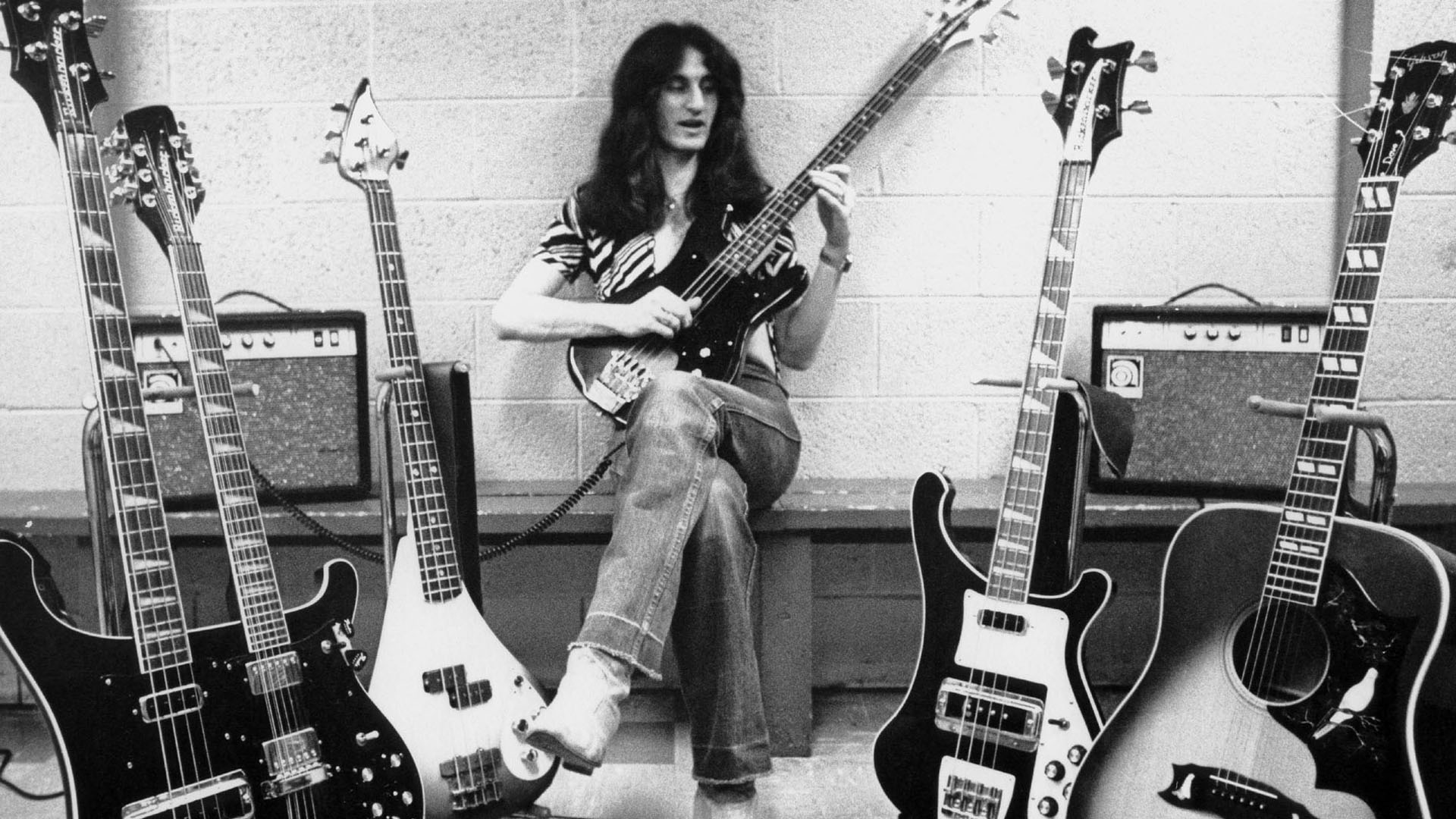
Non-musicians should not panic, by the way. Despite its density of detail and chief target audience of bass freaks, Lee's book retains the wry, self-effacing tone that Rush fans have come to expect from him over the years. Where many books about musical instruments are needlessly exclusive and bogged down with technical waffle, this hefty volume was written with a firm "Welcome one, welcome all" philosophy in mind.
"I just tried to make sure that the book was like a conversation," Lee notes. "That's what I hoped to achieve, with comical asides. Just have some fun with it, you know? Sometimes you have to take the piss out of the nerdiness yourself! It was great fun to do. It was way more work that I ever imagined it to be and it really does feel like quite an accomplishment.
"I wish I'd had more pages, to be honest," he continues. "I fought for 408. I had to cut it from the original 600 or so! But there are potted histories in there, there are collector's tales and what I call 'nerd bubbles, pointing out the most obscure details. Sometimes we take the instruments apart so you can have a look under the hood. It's fun to do that. So this is what I've been doing in my spare time!"
Now that he has completed his paean to the bass, Lee is bracing himself for the onslaught of questions about his future musical plans. Nearly a year has passed since Rush announced their retirement, and little has been heard from any of the band. Lee is perhaps the Rush member most expected to re-enter the fray, so Prog asks if there is any prospect of new music on the horizon.
"The honest answer is no. Not really," Lee chuckles. "I go down to my studio, which I do, and I play these bass guitars because I have quite a few of them and they're fun to play. I like to keep my fingers in shape. When I play, ideas come out, so I record them and then I forget about them, When I go back to them, I'm sure half of them will be shit and erase them. But I fully intend to go down one day and see what I've gathered down there. Once I've finished promoting this book, I do hope to become a musician again! But I have no idea what form that will take. I have no plans and I don't know where I'm headed."
Whatever he does end up doing, it's a safe bet that Geddy Lee will be armed with more bass guitars than he actually needs. And he'll be loving every single nerdy second of it.
"I took about 27 various guitars out on the last Rush tour and it was super fun," he concludes. "People expect me to be playing my [Fender] Jazz and I remember the looks on people's faces when I first went onstage with a Gibson Thunderbird... it was like, 'What the hell is he doing with that? Why would he do that?' It was funny. And if I'm honest, I can't imagine ever doing a tour again without taking a bunch of basses with me."
Geddy Lee's Big Beautiful Book Of Bass REVIEW
By Jerry Ewing, illustration by Pete Fowler
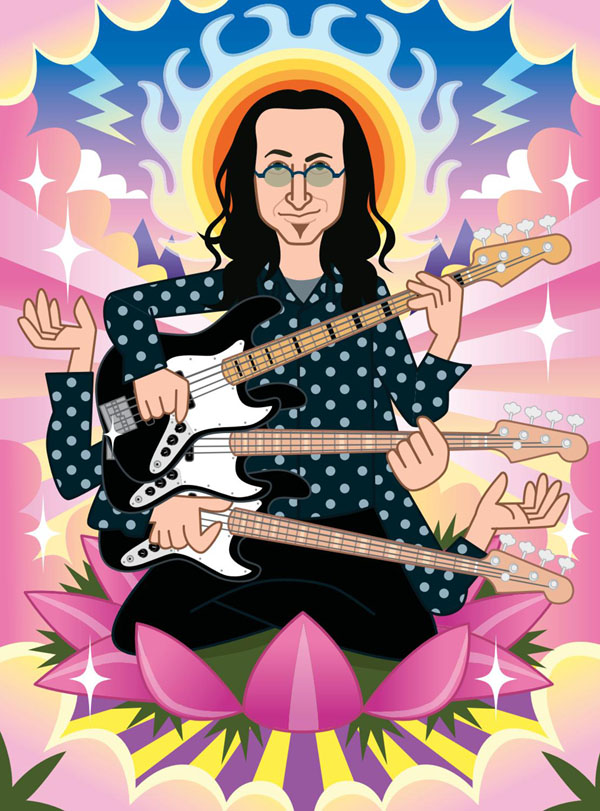
As Rush exit stage left, the story continues with members indulging other avenues. In three editions - Ultra Limited, Luxe Limited and Standard, the band's bass ace tackles a book project of biblical proportions.
Let's get one thing straight: this book, much like a well-known outdoor wood care oil, does exactly what it says on the cover. It's very big - so big, in fact, that you should be careful lifting it. We're being serious. It did this writer's back some damage just carrying it home from work in a backpack! Little wonder that elsewhere in this issue Geddy Lee warns, "Don't drop it on your foot." It's also very beautiful. Eye-catchingly lavish, rich in detail and deep in thought. And yes, it's full of bass. Lots and lots of bass. More than 250 of the instruments spread across more than 400 pages, captured in crystal clear detail and in fulsome, striking colour. Never has the bass guitar appeared quite so beautiful before.
Throw in a series of candid interviews with some of the rock world's most prominent exponents and collectors of the bass, an engaging essay from the author, in which he declares that "It's not surprising that sooner or later I'd dive down the proverbial rabbit hole into the world of vintage bass guitars", an overview of Lee's own bass rig for the final Rush R40 tour, a look at his stage and recording gear from 1968 to 2017 and an engagingly humorous timeline of bass history, including such highpoints as when Rush donned kimonos for the first time for 1976's 2112, and this is a most reasonably priced Christmas gift, not just for any bass head, but any Rush fan to boot.
As Lee explains in our feature, he didn't used to be much of a bass collector. Then, some eight years ago, he found himself drawn more to the idea of the instruments his own heroes collected and wondered why he hadn't followed suit.
The initial idea was to spend some time amassing a modest collection. Now he owns more than 250 bass guitars, from his trademark Rickenbacker and Fender, through Gibsons, Epiphones, Hofners and Ampegs, to the works of lesser-known luthiers such as Tony Zemaitis and Antonio Wandre Pioli. Finding time on his hands in the wake of Rush's last tour and with the band mothballed for the foreseeable future, the idea of a book about his chosen instrument reared its head, and Geddy Lee's Big Beautiful Book Of Bass became a reality.
Along the way, Lee chats to a variety of some of the finest bassists in music, including John Paul Jones, Les Claypool, Rob Trujillo, Bill Wyman, Jeff Tweedy, Adam Clayton, Bob Daisley and more. Anyone who has interviewed Lee will tell you what a genial conversationalist he can be, and this comes through strongly in these interviews. When you read about these bass players sitting down and chewing the fat over their beloved instrument, the passion and musical intrigue they still dearly possess is evident. Reading about Claypool's love of Lee, Chris Squire and Tony Levin's bass sound, how the youthful Clayton dug Genesis and Pink Floyd or how Trujillo became the proud owner of Jaco Pastorius' bass of doom, both theirs and Lee's passion is infectious. It helps immeasurably, too, that Lee has no need to pander to the whims of a magazine or newspaper editor, just himself. These interviews are refreshing, open, insightful and, most importantly, great fun to read. One senses that they were also great fun to conduct. Oh, to have been a fly on the wall when John Paul Jones declared, tongue-in-cheek of course, that "Led Zeppelin is not my chosen subject".
One suspects that if Rush had chosen not to step back after R40, this book might never have seen the light of day. But, with his newfound free time, Lee has crafted something unique and quite wonderful. There are enough insights into his and Rush's lengthy career to pull in non-bass nerds, too, such is the relaxed, everyman nature of Lee's delivery, while his affection for the subject matter simply leaps off of every page.
And Rush fans? They'll be in seventh heaven. Especially with the look at Lee's equipment from over the years, as well as the detail on the 27 or so bass guitars he chose to take on the road for the band's final jaunt. Each and every one of them, however, is likely to catch a breath, as Alex Lifeson in his hilarious Backword at the start of the book opens with the line, "Geddy Lee is still my best friend." A lovely and fitting tribute in a wonderfully impressive book.